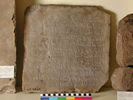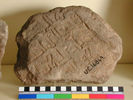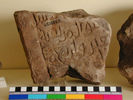| Homepage | Timeline | Maps | A-Z index | Learning |
Islamic burial customs: tomb stones
Muslims believe in life after death. Several chapters in the Quran give specific rules on how to treat the dead:
539. A Muslim who is dying, whether man or woman, old or young, should, as a measure of precaution, be laid on his/her back if possible, in such a manner that the soles of his/her feet would face the Qibla (direction towards the holy Ka'bah).
540. It is recommended that the dead body should be laid facing the Qibla during the Ghusls (bath in order to wash the body) However, when Ghusls are completed, it is better to lay it the same way as it is laid when prayers are offered for it.
547. * It is Mustahab (desirable act) that the eyes and lips of a dead person be shut, its chin be tied, its hands and feet be straightened and to spread a cloth over it. If a person dies at night it is Mustahab to light the place where he/she is, to inform Momineen to join the funeral, and to hasten the burial. But if, they are not sure of his/her death, they should wait till they are certain. Moreover, if the dead person is a pregnant woman and there is a living child in her womb, her burial should be delayed till such time that her left side is cut open and the child is taken out and then to sew her side.
At different periods burials might be adorned with an inscribed tomb stone, and in the case of richer individuals, placed in larger or smaller mausoleums. The finest of these in Cairo are among the outstanding architectural masterpieces of Islamic civilization.
(click on the images for a larger picture and more information)
|
UC 16845
|
UC 16846
|
UC 16849
|
UC 16857
|
 |
 |
 |
 |